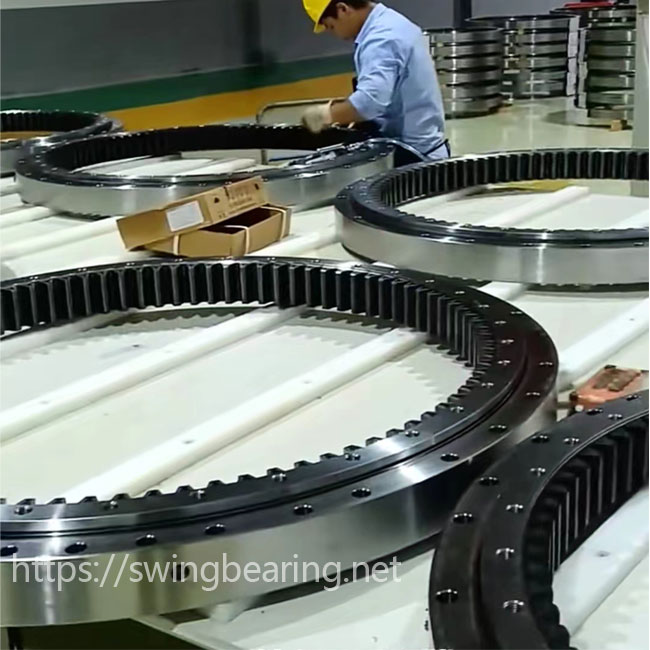
In the realm of heavy machinery and engineering, cross roller slewing bearings are indispensable components that ensure smooth and efficient rotation in large rotary devices. These bearings are commonly found in applications such as bucket wheel excavators, heavy transport machinery, port machinery, mining machinery, and construction engineering machinery. Their role is pivotal in maintaining the operational integrity and performance of these machines. This blog aims to delve deep into the intricacies of cross roller slewing bearings, exploring their structure, functions, and various types to enhance your understanding of these critical components.

Cross roller slewing bearings are characterized by their unique structure, which includes two seat rings. These seat rings are designed to be compact and lightweight, allowing for precise manufacturing and minimal assembly clearance. High installation accuracy is crucial due to the compact design. The rollers within the bearing are arranged in a 1:1 cross pattern, which enables the bearing to simultaneously handle axial force, overturning moments, and significant radial force.
The standard type of cross roller slewing bearing typically comes in two parts, either the outer or inner ring, which are fixed together after the rollers and retainers are installed. This configuration allows for an ideal load state by adjusting the connecting bolts and fixing flanges during installation, making the process straightforward and efficient.
The cross roller slewing bearing is designed to bear loads in all directions due to its rollers being arranged perpendicular to each other on a V-shaped grooved rolling surface at a 90° angle through a spacer retainer. This design enables the bearing to handle large radial loads, axial loads, and moment loads effectively.
The minimized size of the inner and outer rings, especially in ultra-thin structures, provides high rigidity, making these bearings particularly suitable for applications requiring precision and compactness. These include industrial robot joints, rotating parts of machining center rotary tables, mechanical arm rotating parts, precision rotary worktables, medical equipment, measuring instruments, and IC manufacturing devices.

To cater to different requirements, various types of cross roller slewing bearings have been developed based on the basic design. Broadly, these can be categorized into three main types: basic type cross roller slewing bearings, high rigidity cross roller slewing bearings, and ultra-thin cross roller slewing bearings.
From an external structure perspective, the bearings can be classified into inner ring segmented, outer ring segmented, and inner and outer ring integrated types. Internally, they can vary as full-roller types, metal window-type retainer types, and nylon or metal insulator block types. Connection methods also differ, including bolt connection types, rivet connection types, and spring disc types, among others, providing a wide array of choices to meet specific application needs.
One of the primary advantages of cross roller slewing bearings is their simple yet robust structure. The single row of cylindrical rollers arranged in a cross pattern within a single roller path provides a substantial axial and radial carrying capacity, as well as a significant overturning moment. This design prevents the rollers from contacting or locking on one side, ensuring smooth operation.
Moreover, the segmented structure of the inner and outer rings in standard type cross roller slewing bearings allows for clearance adjustment. This feature enables the application of preload, which can result in high-precision rotational motion, a crucial requirement in many high-performance applications.

Cross roller slewing bearings are vital components in various heavy machinery and precision instruments, offering robust load-bearing capabilities, high rigidity, and precise rotational motion. Understanding their structure, functions, and different variants can help in selecting the right bearing for specific applications, ensuring optimal performance and longevity of the machinery.
Q1: What are the primary applications of cross roller swing bearings?
Q2: How are the rollers in a cross roller swing bearing arranged?
Q3: What are the different types of cross roller swing bearings?
Q4: What advantages do cross roller swing bearings offer?
Q5: Why is high installation accuracy important for cross roller swing bearings?